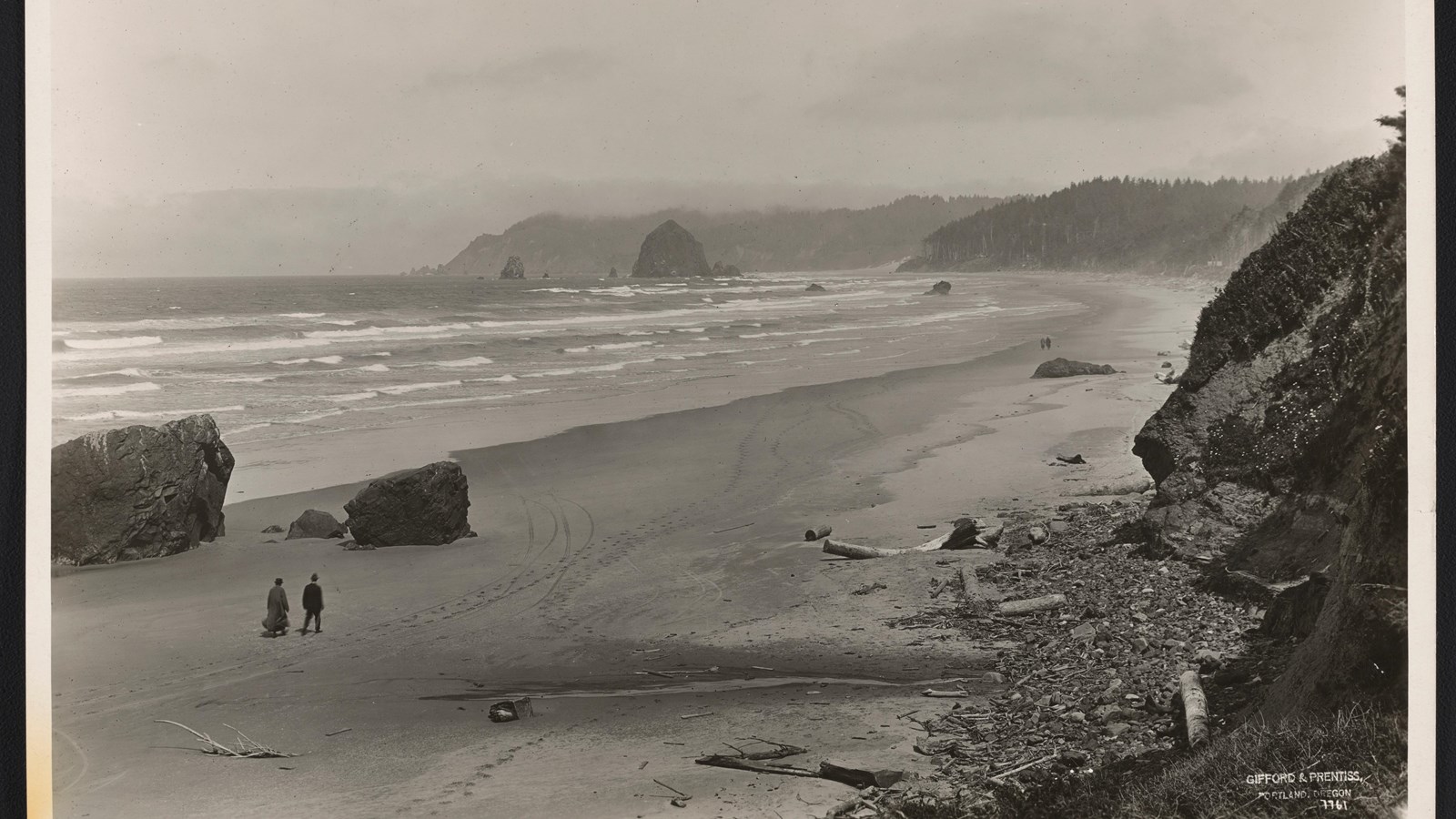Last updated: November 28, 2023
Place
Cannon Beach, Oregon

Oregon Historical Society
Beach/Water Access, Benches/Seating, Scenic View/Photo Spot
“They Call a whale E cu-la”—William Clark, January 8, 1806
A week after the 1805 winter solstice, Clatsop leader Coboway visited the log fort that the White visitors were building on his homelands. Coboway and other Clatsop people visited often to trade, smoke, and play games.
But on this particular day in late December, Coboway shared some news: a “large Fish was drove by the Wind & waves on the shore.” Through the gestures Coboway made, Meriwether Lewis and William Clark realized it was a whale.
A week later, Coboway and his friends returned with whale blubber.
Lewis called the blubber “excellent food” and elaborated, “it was white & not unlike the fat of Poark, tho’ the texture was more spongey and somewhat coarser. I had a part of it cooked and found it very pallitable and tender, it resembled the beaver or the dog in flavour.”
Clark decided that they should retrieve some blubber themselves. He hired a Clatsop man to guide him, twelve men, and Sacagawea (and presumably her baby) down the coast to the whale. They packed items that people in the nearby Nehalem village might want to trade for whale blubber, like fishhooks, files, and glass beads.
When they arrived at the beach, the 105-foot-long whale was “nothing more than the Sceleton.” Nehalem families were “busily engaged boiling the blubber, which they performed in a large Squar wooden trought by means of hot Stones; the oil when extracted was Secured in bladders and the Guts of the whale.”
Nehalem families offered to trade whale blubber and oil for elk meat, but Clark had not brought any with them. After more haggling, they decided that the glass beads would suffice. Clark, Charbonneau, Sacagawea, and the other men divided the heavy whale blubber and oil among their party and returned to Fort Clatsop.
On the way, they passed many Chinook and Clatsop people who were also carrying large amounts of whale blubber home. Maybe they felt similar to Clark’s party: energized by the festive environment around this giant spectacle on the beach and excited to bring their families a special treat.
About this article: This article is part of a series called “Pivotal Places: Stories from the Lewis and Clark National Historic Trail.”
Lewis and Clark NHT Visitor Centers and Museums
This map shows a range of features associated with the Lewis and Clark National Historic Trail, which commemorates the 1803-1806 Lewis and Clark Expedition. The trail spans a large portion of the North American continent, from the Ohio River in Pittsburgh, Pennsylvania, to the mouth of the Columbia River in Oregon and Washington. The trail is comprised of the historic route of the Lewis and Clark Expedition, an auto tour route, high potential historic sites (shown in black), visitor centers (shown in orange), and pivotal places (shown in green). These features can be selected on the map to reveal additional information. Also shown is a base map displaying state boundaries, cities, rivers, and highways. The map conveys how a significant area of the North American continent was traversed by the Lewis and Clark Expedition and indicates the many places where visitors can learn about their journey and experience the landscape through which they traveled.
